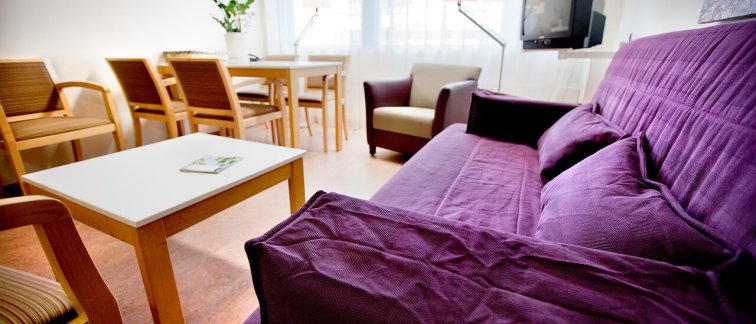Your attending doctor has booked you in for a test under sedation in the Lung Disease Treatment Room. Sedation means you'll feel sleepy, so you'll be less aware of the test taking place. In effect, sedation will make you feel calm and relaxed. This brochure provides more detail on what to expect of sedation and what you need to be aware of beforehand.
Preparation
You are allowed to eat and drink up to six hours prior to the test, but you must refrain from doing so after that point. You should continue to take your medication as usual, unless your doctor has told you otherwise.
Method
- Prior to the start of the test, an intravenous needle will be inserted into a blood vessel in your arm or hand.
- Before the sedative is applied, we will use a clip on your finger to check whether your heartbeat and the oxygen level in your blood are normal. We will also take your blood pressure. The sedative (midalozam) will be administered through the intravenous needle. We will continue monitoring your heartbeat, blood pressure and blood oxygen level during the test.
- Once the test has been completed, you will be wheeled to the recovery room on your stretcher. Your personal belongings will stay with you on your stretcher. You will stay in the recovery room for at least one hour to ensure you have properly recovered from the sedative. To ensure you get the rest and privacy you need, no relatives/partners are allowed in the recovery room. If there are no complications, we will give you something to drink and remove the intravenous needle after one hour. Once you have properly recovered, your doctor will visit you to discharge you from the hospital. Your relatives/partner are allowed to attend this discussion. Once your discharge discussion is complete, you will be allowed to return home.
Purpose
The purpose of sedation is to make you feel sleepy so you're less aware of the test taking
place. Some people will start feeling sleepy immediately after the injections, while others
will take a little longer to feel the effect. We cannot tell in advance how you will react
to the medication. The benefit of sedation is that you do not need to be placed on a ventilator (unlike when you are under general anaesthetic), and that the doctors and nurses can keep talking to you. Your reflexes will also not be affected, which means the risk of complications (choking, for example) is lower than with a general anaesthetic. After the test, you will often forget what has happened (retrograde amnesia).
Special circumstances
In some instances—mainly in the case of poor heart and/or lung function—the lung specialist performing the test may choose not to administer a sedative due to the risk of complications.
Resuscitation policy
The Lung Disease Treatment Room is used for tests/treatment only, so the chance of complications is small. Regardless, we would like to point out that as a matter of principle,
all patients will be resuscitated in the event of complications, unless the patient has explicitly notified the doctor that he/she would prefer not to be resuscitated.
For inpatients, we will respect the resuscitation policy agreed as part of their hospital treatment.
In conclusion
You are not allowed to travel independently for 24 hours.
This means you are not allowed to go home unaccompanied. This does not just apply to your own transport, but to taxis and public transport too. Please make sure you arrange for someone to accompany you home in advance. If you have not done so, we will be unable to proceed with the test.
Any important appointments are also best postponed until after the first 24 hours.
Contact
If you have any concerns or questions after the test, feel free to contact the Lung Disease clinic:
During office hours you can call telephone number (+31) 020 - 444 05 22, ask for the on-call lung specialist
Outside of office hours you can call Amsterdam UMC central number (+31) 020 - 444 44 44, ask for the on-call lung specialist

